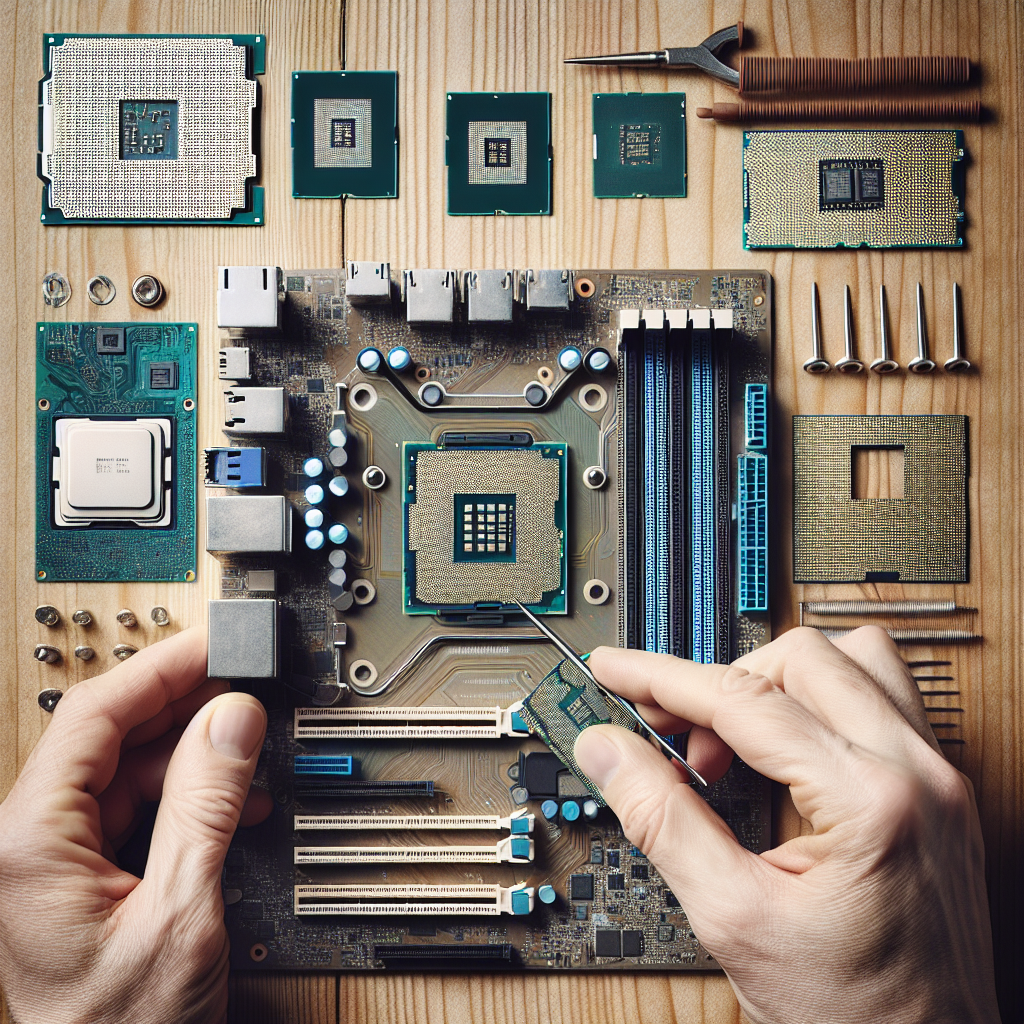Replacing a CPU on a motherboard may seem like a daunting task, especially for those who are not well-versed in computer hardware. However, with the right tools and proper guidance, it can be a straightforward and rewarding process. This article provides a step-by-step guide on how to replace a CPU on a motherboard.
Tools Needed
Before you start, make sure you have the following tools:
- Anti-static wrist strap
- Thermal paste
- Isopropyl alcohol and lint-free cloth
- Phillips-head screwdriver
Preparing the Workspace
Ensuring that you have a clean and static-free workspace is crucial. Here are the steps to set up your workspace:
- Find a flat, spacious, and clean surface to work on.
- Use an anti-static mat or wear an anti-static wrist strap to prevent electrostatic discharge.
- Disconnect all power sources and peripherals from your computer.
Step-by-Step Guide to Replacing the CPU
Step 1: Remove the Computer Case
Use a Phillips-head screwdriver to remove the screws securing the side panel of your computer case. Slide the panel off and set it aside. If necessary, consult your computer’s manual for further instructions.
Step 2: Disconnect and Remove Components
Before you can access the CPU, you may need to remove several components that are obstructing it, such as the GPU, RAM, or cooling fan. Take note of their positions for reassembly.
Step 3: Remove the Old CPU Cooler
Disconnect the CPU cooler’s fan cable from the motherboard. Then, remove the screws or clips that secure the cooler to the motherboard. Carefully lift the cooler off the CPU to avoid damaging it.
Step 4: Clean the Old Thermal Paste
Use isopropyl alcohol and a lint-free cloth to clean the old thermal paste from both the CPU and the cooler. Cleaning is essential for ensuring effective heat transfer.
Step 5: Remove the Old CPU
Unlock the CPU socket by lifting the lever or rotating the locking mechanism, depending on your motherboard’s design. Carefully lift the old CPU out of its socket, holding it by the edges to avoid touching the contact points.
Step 6: Install the New CPU
Line up the new CPU with the socket, ensuring that the notches on the CPU match the socket’s layout. Gently place the CPU into the socket and secure it by lowering the lever or rotating the locking mechanism.
Step 7: Apply New Thermal Paste
Apply a small amount of thermal paste—about the size of a pea—onto the center of the CPU. The paste will spread evenly once the cooler is reinstalled.
Step 8: Reinstall the CPU Cooler
Place the CPU cooler back onto the CPU, aligning it with the screw holes. Secure the cooler by tightening the screws or reattaching the clips. Remember to reconnect the cooler’s fan cable to the motherboard.
Step 9: Reassemble the Computer
Reinstall any components that you previously removed and reconnect all cables. Make sure everything is securely in place before putting the side panel back on the case.
Step 10: Power On and Test
Reconnect your computer to the power source and turn it on. Go into the BIOS/UEFI to ensure that the new CPU is recognized. Monitor temperature readings to ensure that the CPU cooler is functioning correctly.
Important Tips
- Handle all components with care to avoid physical damage.
- Make sure to discharge any static electricity before touching sensitive components.
- Consult your motherboard’s manual for specific instructions and compatibility requirements.
Conclusion
Replacing a CPU on a motherboard involves several steps, but by following this guide, you can accomplish the task successfully. Always take necessary precautions to ensure both your safety and the safety of your computer components. With patience and attention to detail, you can upgrade your CPU and boost your system’s performance.

